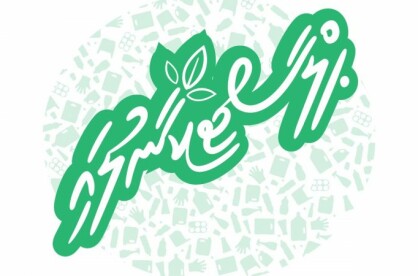Statistics worldwide indicate an alarming increase in gender based violence (GBV) and domestic violence (DV) since the COVID-19 pandemic, and is notably higher in developing countries, such as the Maldives. Known for being a hot spot destination for honeymoons, it is also the nation, ironically, with record breaking divorce rates.
There is an existing legal framework which, if implemented effecively, can bring in solid improvements in providing safety, protection, and justice to victims of GBV. The Gender Equality Act (Law no. 18/2016), Domestic Violence Prevention Act (Law no. 3/2012), Prevention of Sexual Abuse and Harassment Act (Law no: 16/2014), and Sexual Offences Act (Law no: 17/2014), along with many more related policies, have been put in place to protect victims of abuse. What is most unfortunate is that the public are not substantially aware of, and are further limited by the recent lockdowns from accessing, these protective services that are rightfully theirs by law.
One way to look at the increasing incidences of reported GBV is that people have become more aware and forthcoming about DV, as the statistics are the results of reporting. Comparatively, the number of reported cases in just the first quarter of 2021 is double that of the same period in 2019. Although the highest recorded numbers were in the year 2017, with close to 900 reported cases, by the end of the third quarter in 2021, there have already been 713 reported cases of DV. The strongly patriarchal culture, coupled with decades of immunity given to perpetrators, continues to thrive, although the number of reported cases of female adolescents who are abused continue to increase, especially immediately following a COVID-19 lockdown period.
The most prevalent type of DV is that of physical violence between parties of romantic or intimate relationships, where the majority of victims are female, and perpetrators are mostly male. Over the years however, the number of cases of male victims have increased, but these cases are only reported much later after a medico-legal report (MLR) is issued following a visit to emergency services at the hospital.
One of the many ways that GBV cases are reported is through direct reporting from a hospital. Victims of physical abuse generally make visits to the hospital ER only after receiving severe injuries, with the story behind it being of accidents either from tripping or falling down the stairs. It is often followed by the attending clinician inquiring further about the injuries, based on suspicions of abuse, and preparing a MLR to make a referral to respective authorities. However, it takes at least two such visits for the victims to actually follow through with filing a case for their rights and safety, and to come out of the relationship.
Besides the lack of knowledge on where or how to seek help, one reason for this vicious cycle is that there is a lengthy and difficult process that needs to be followed to access these services. Filling out forms, submitting medical documents and such, are necessary to actually request protection from authorities, and the victims, who are already exhausted and emotionally burnt out from prolonged abuse, do not have the motivation to push through a complicated process.
There is also the lack of trust in the system, with the belief that the legislative process would take too long, which can be attributed to the evident lack of human resources or capacity. This results in the service providers being unable to invest in each individual adequately due to the overwhelming number of cases they each have to attend.
Another more unfortunate barrier is that many of these relationships may have initially caused conflicts within the family, such as a marriage without the family’s blessings. This makes it difficult for victims to reach out for help even from their immediate families. The fear of losing financial support, the stigma of being a survivor of DV, and the ignorant nature of traditional beliefs surrounding family reputations, contributes to the hesitance to report and seek help.
The main body responsible for attending to these issues is the Ministry of Gender, Family and Social Services (MoGFSS), where their mandate includes monitoring and ensuring that women, children, elderly and persons with disabilities are provided the psychosocial support they need. This mandate includes creating awareness on gender equality across the country, to assist and implement the laws and procedures to put a stop to GVB and DV, to empower and protect the rights of women, children, elderly and persons with disabilities, to provide support to NGO’s in their work— shortly put, to ensure that the people are given the support and protection afforded to them by law.
Ideally, when a case gets reported as it should, the first action to be taken is to ensure the safety of the victims. Every reported case is assigned to a case worker at the MoGFSS, who is to attend to the victims immediately. They take on the responsibility to ensure that the victim receives the medical, social, psychological, and even financial support required.
They take on a supervisory role, while connecting their client to the relevant institutes for these services, such as hospitals and the Centre for Mental Health, to provide psychological support, and also NGO’s such as the Family Legal Clinic, which plays an important role in providing the support and information on the legal rights and options in following through with the case. Additionally, EHEE and HOPE for Women, as well as MOMs, all NGOs, provide either direct or crowd-sourced funding and basic needs for those in need.
If need be, there are a total of four functioning safe homes for victims of abuse, managed by the Family and Children’s Service Centre’s (FCSCs). FCS centres have also been established in 19 atolls to provide support and protection. Considering the increasing numbers of cases and the sad truth that they are only being reported after months, sometimes years, of enduring the abuse, how many people actually know about these safe homes, or the state that they are in, to even consider them a better option than their current situation?
On 15 July 2020, MoGFSS launched the campaign Geveshi Gulhun, a campaign to raise awareness on DV. This is aimed at creating communities without the threat of DV, to strengthen the support provided to survivors of DV, to ensure the quality of the services provided to all who are at risk, and those who have survived DV.
It is to be implemented over the course of two years, during which time, the government plans to establish five regional DV shelters, and to utilise a mobile application to stay connected with survivors. HOPE for Women is one notable NGO that has conducted multiple campaigns for awareness, with plans to create peer-support groups for survivors of DV and GVB.
The Maldivian society is by no means backwards or undeveloped; with high levels of education and degree-holders compared to other similarly sized countries, and with sophisticated laws and systems in writing, the Maldives should be well on its way to becoming a small, developed country, lifting beyond the mire of the ‘third-world’. However, while systems are in shambles, the parliament is a sham, and democracy is hijacked, if individuals can work to make their homes safer, their families more functional, then hopefully this toxicity may well be healed, starting at home.






